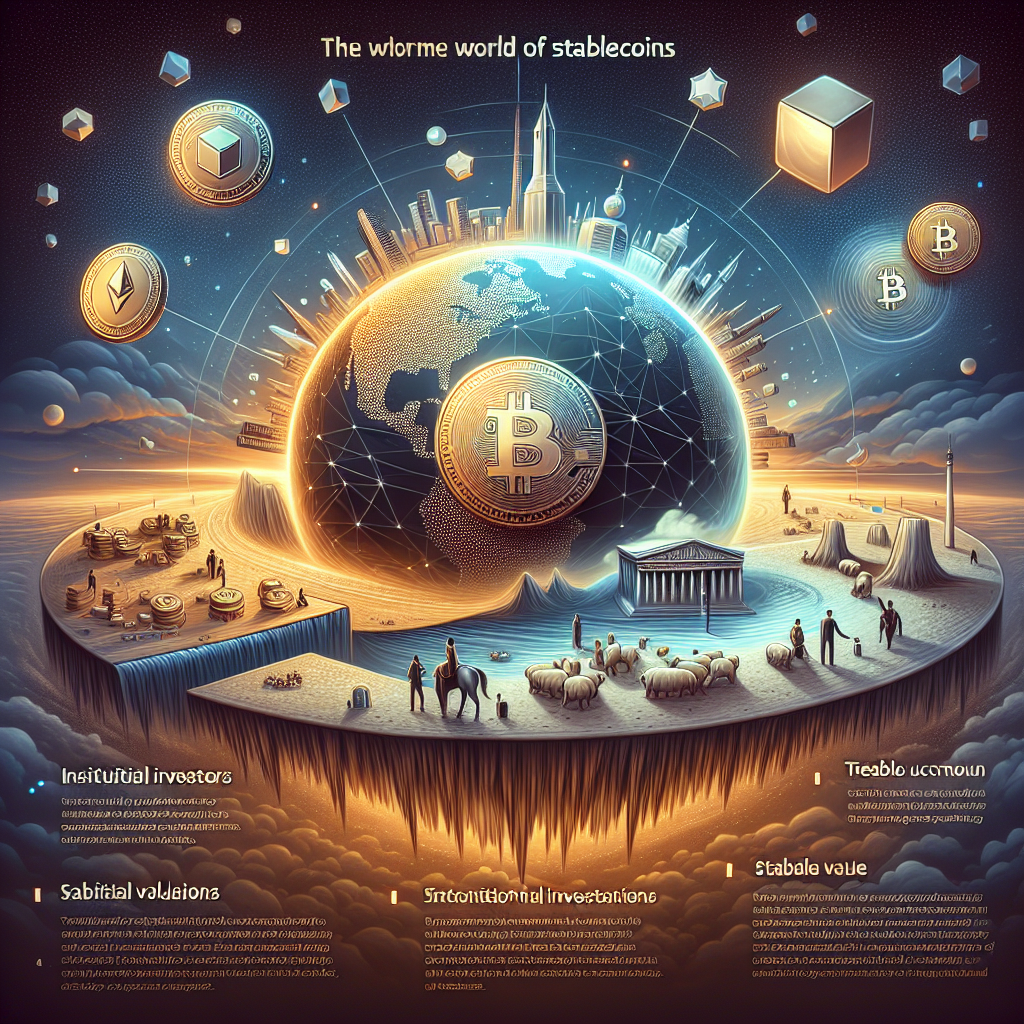In the dynamic world of cryptocurrency, stablecoins have emerged as a bridge between traditional finance and volatile digital assets. Over the past few days, the surge in the creation and adoption of stablecoins has caught the attention of financial experts worldwide. Unlike typical cryptocurrencies, stablecoins are designed to maintain a steady value, often pegged to a fiat currency or a basket of assets. This characteristic makes them an attractive option for mitigating the notorious volatility in the crypto market.
The finite supply, transparency, and lower transaction fees make stablecoins appealing, especially for institutional investors wary of the wild price swings witnessed with coins like Bitcoin and Ethereum. One of the most interesting cases I came across during my tenure at Deloitte was a large hedge fund that began utilizing stablecoins for cross-border transactions. The adoption not only streamlined their financial operations but also significantly reduced the transaction costs involved in fiat conversions and currency risk hedging.
Recent news highlights the introduction of further regulations aimed at ensuring stablecoin reserves are adequately backed and audited. The U.S. securities regulators have intensified their scrutiny of stablecoins, stressing the necessity for assurances that these digital currencies can be reliably redeemed. Recalling the collapse of TerraUSD, these regulatory developments offer an additional layer of security for investors and provide insights into how financial practices evolve to incorporate digital advances responsibly.
Aside from regulations, the popularity of stablecoins is spurred by the growing need for a decentralized economy. In this current financial climate, there is a palpable paradigm shift pushing towards the dissociation of assets from conventional financial institutions. With ventures like Meta exploring stablecoin potential for online transactions via digital wallets, stablecoins are poised to revolutionize the online retail framework.
In capturing these seismic shifts, stablecoins also factor significantly into emerging markets where conventional banking systems are less reliable. By lowering barriers to access financial services, they pave the way for increased participation in the global economy. This reshaping of global finance is clearly reflected in my experiences observing fintech innovations at PwC, where we often assessed the risk and potential of integrating such digital solutions into traditional banking services.
As we forge ahead, the conversation surrounding stablecoins will only grow in relevance and complexity. It is imperative for stakeholders in fintech and beyond to remain informed of technological and regulatory developments to strategically navigate the unfolding landscape.
Estimated reading time: 2 minutes, 6 seconds
The Emergence of Countless Stablecoins: Analyzing Their Role in Financial Stability Featured
 Explore the rapid growth of stablecoins in the fintech industry, their role in financial stability, and the impact of recent regulatory changes on their adoption.
Explore the rapid growth of stablecoins in the fintech industry, their role in financial stability, and the impact of recent regulatory changes on their adoption.
Latest from Fin Tech Brief
- The Rise of Stablecoins: Are They the Future of Cryptocurrency?
- The Rise of Central Bank Digital Currencies: A New Era for Financial Systems
- The Rise of Central Bank Digital Currencies (CBDCs): What It Means for Cryptocurrency Markets
- Navigating the Recent Developments in Cryptocurrency Exchange Regulations
- Insights into the Current Surge of Institutional Interest in Crypto Investments


Most Read
-

-
Apr 27 2019
-
Written by FinTech News Brief Staff
-
-

-
Sep 21 2018
-
Written by Jacob Roberts
-
-

-
Jan 09 2019
-
Written by FinTech News Brief Staff
-
-

-
Jan 16 2020
-
Written by FinTech News Brief Staff
-















